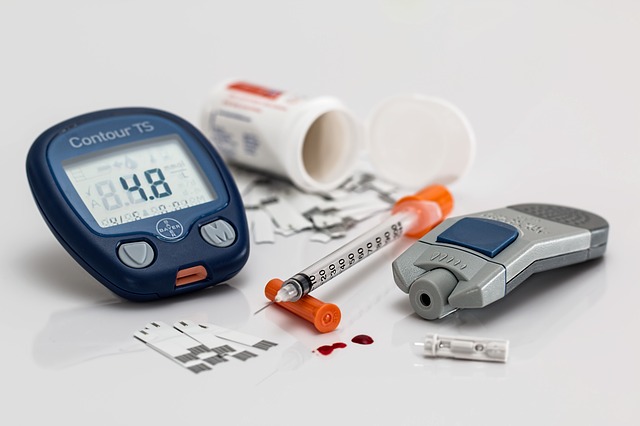Diabetes remains one of the major non-communicable diseases in Malaysia, affecting up to 3.9 million people, or 16.8 per cent of the Malaysian population.
According to the National Health and Morbidity Survey (NHMS) 2019, seven million Malaysian adults aged 18 years and older are estimated to develop diabetes by 2025, a significant health public concern that will see a higher diabetes prevalence of 31.3 per cent.
The NHMS 2019 survey also found that 49 per cent of people with diabetes have never been examined or diagnosed with the chronic condition.
The increasing number of people living with diabetes in Malaysia has been linked to health issues such as being overweight, obese, physically inactive, and increased consumption of highly dense calories.
Moreover, diabetes, if not monitored or managed, can lead to other complications like cardiovascular diseases, nerve and kidney damage, amputation, and potential blindness.
This is worrying as often these complications can cause a strain to an individual’s livelihood, diminishing the quality of life. It can also negatively impact their families as they would be required to provide ongoing care.
Globally, the meteoric rise in the prevalence of diabetes is particularly striking, and the population has made blood glucose monitoring technology a global research topic in recent years.
For this reason, more emerging technologies are advancing towards an easier way to revolutionise the lives of those who are living with diabetes and liberate them from needing uncomfortable routine finger-prick tests.
In addition, wearable devices such as continuous glucose monitoring (CGM) products bring about a paradigm shift, providing convenience for patients to monitor their glucose levels and health care professionals to conduct telehealth assessments, especially during these unprecedented times.
Rethinking Continuous Glucose Monitoring
The last few years of innovations have made CGM devices smaller, more convenient, and reliable. The rapid acceptance of technology as a health care tool presents an opportunity to drive prevention, detection, early intervention, and ongoing support.
As the Covid-19 pandemic continues to force people to stay at home, those living with diabetes need to have the ability to monitor their glucose level to speak to their health care professionals and make informed decisions about their treatment plan.
Therefore, CGM technologies such as the Abbott FreeStyle Libre have proven to be an important milestone in this journey of self-monitoring of diabetes. Technology that is seamless and provides personalised diabetes care management has now become a new normal.
Innovative technologies such as Abbott’s CGM system is designed to be placed on the back of the upper arm. It continuously measures the glucose concentration in the body’s interstitial fluid (ISF) — a thin layer of fluids that surrounds the cells of the tissue below the skin and not from the blood.
People living with diabetes should note that ISF and blood glucose readings may not always match. As glucose in the blood takes time to reach the ISF, there may be a ‘lag time’ occurrence.
Hence, if an individual’s blood glucose levels are stable, the measurements of ISF and blood glucose would be similar. However, should the blood glucose levels increase or decrease, individuals would see some differences.
Additionally, CGM also allows users to monitor their Time in Range (TIR), a measure (measured as a percentage) of how long a patient’s glucose value was within the target glucose range.
With better and longer TIR, it will positively impact an individual’s glucose control and reduce the risk of long-term health complications.
Learning To Live Free, With Diabetes
Abbott’s FreeStyle Libre system does more than eliminate the need for painful finger pricking. Users can closely monitor their glucose levels and share the data with their doctors remotely, which translates to fewer visits to the clinic, especially during a pandemic.
With the ability to self-monitor their glucose levels, individuals living with diabetes can manage their lifestyle, diet, medication, and activity, therefore impacting their glucose result and be able to make more thoughtful and timely self-management decisions.
CGM is critical to help people living with diabetes, and health care professionals evaluate individual responses to therapy and make the appropriate change in their daily diet.
In addition, this targeted approach using CGM technology can help health care professionals improve users’ adherence to treatment by showing accurate responses to their current treatment plan.
Its mobility and ease of use are also additional benefits for individuals currently faced with the challenges of the ongoing lockdowns brought about by the Covid-19 pandemic.
That being said, for the millions of Malaysians living with diabetes, CGM is truly a technological game-changer that has revolutionised the way they self-monitor their glucose levels.
Evidently, CGM technology can play a role in improving health outcomes, stabilise glucose levels, and keep people living with diabetes out of hospitals.
As a result, these individuals would be able to lead healthy, full lives, and that begins with having widespread access to the latest technologies, including CGM.
Article courtesy of Abbott, a global diversified health care company that aims to help people live their healthiest possible lives.








